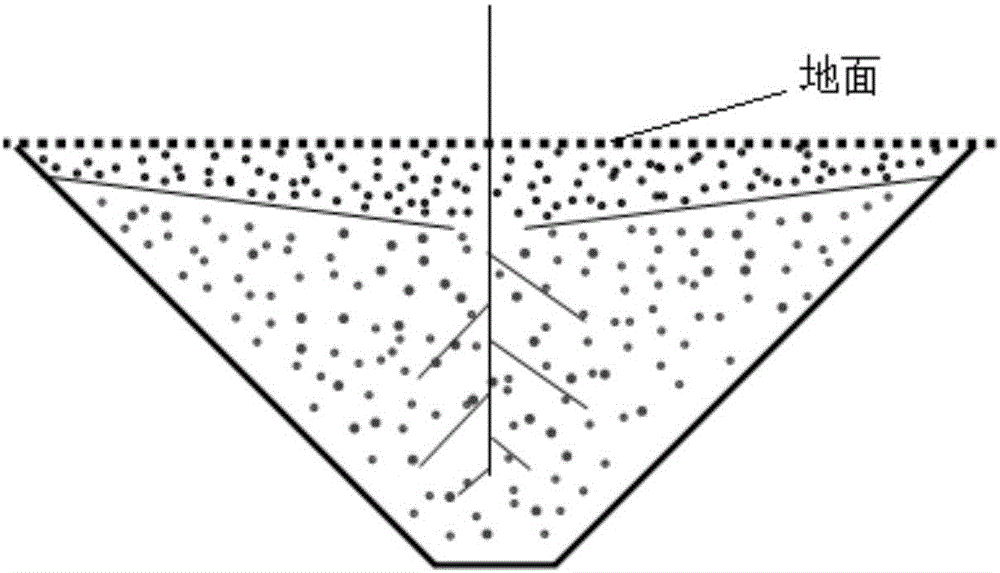Method for rainwater collection and water retention afforestation of arid mountain bare-rooted seedlings
A technology of bare-root seedlings and mountainous areas, which is applied in the field of rain-collecting and water-conserving afforestation of bare-rooted seedlings in arid mountainous areas, can solve the problems of unstable interaction relationship and restrictive effect, and achieve rapid rooting, good afforestation effect, and good permeability Effect
- Summary
- Abstract
- Description
- Claims
- Application Information
AI Technical Summary
Problems solved by technology
Method used
Image
Examples
Embodiment 1
[0026] Mix the fermented Bacillus fusiformis L106, Brevundimonas X60 and Lactobacillus casei in a cfu ratio of 4:1.6:0.7 to form a liquid composite microbial agent. Mushroom dregs: vermicompost: sawdust: activated humic acid are mixed according to the volume ratio of 4:1.5:1.5:0.5 to make an adsorption carrier, and the liquid composite bacterial agent is inoculated into the adsorption carrier to make a solid bacterial agent. In the spring of 2014 Arborvitae afforestation experiment was arranged in Beishan of Niuwangquan, Beimiaoshan Village, Miaoshan Town, Laicheng District, Laiwu City as the test group, and the inoculation ratio was 8% (mL / g). At the same time, experiments were set up for Bacillus fusiformis L106 (control group 1), Brevundimonas X60 (control group 2), and Lactobacillus casei (control group 3), which only adsorbed the same amount of viable bacteria. The survey results of afforestation survival rate, plant height and ground diameter in the autumn of 2014 are sh...
Embodiment 2
[0030] Mix the fermented Bacillus fusiformis L106, Brevundimonas X60 and Lactobacillus casei in a ratio of cfu of 4:1:1 to form a liquid composite bacterial agent. Mushroom dregs: vermicompost: sawdust: activated humic acid are mixed according to the volume ratio: 4:1:2:0.5 to make an adsorption carrier, and the liquid composite bacterial agent is inoculated into the adsorption carrier to make a solid bacterial agent. In 2015 Arborvitae afforestation experiment was arranged in Beishan of Niuwangquan, Beimiaoshan Village, Miaoshan Town, Laicheng District, Laiwu City in spring as the test group, and the inoculation ratio was 10% (mL / g). At the same time, set peat to absorb the same amount of liquid compound bacterial agent as the control group for afforestation. In the autumn of 2015, the survival rate of afforestation, the number of bacteria in the rhizosphere soil of Arborvitae and the relative water content of leaves were investigated. The results are shown in the table below...
PUM
 Login to View More
Login to View More Abstract
Description
Claims
Application Information
 Login to View More
Login to View More - R&D
- Intellectual Property
- Life Sciences
- Materials
- Tech Scout
- Unparalleled Data Quality
- Higher Quality Content
- 60% Fewer Hallucinations
Browse by: Latest US Patents, China's latest patents, Technical Efficacy Thesaurus, Application Domain, Technology Topic, Popular Technical Reports.
© 2025 PatSnap. All rights reserved.Legal|Privacy policy|Modern Slavery Act Transparency Statement|Sitemap|About US| Contact US: help@patsnap.com



